Almost certainly the most important development in mathematics during the Renaissance was the introduction of algebra to the European academic canon. For part of this appropriation process it followed the same path as the base ten place value number system and the Hindu-Arabic numerals, with which it was in the European context intimately intertwined. However, there are enough differences to justify a separate post.
In the High Middle Ages formal mathematics was totally dominated by Euclidian geometry, an inheritance from ancient Greece. In the Early Modern Period it would become slowly supplanted by algebra leading eventually to the creation of both analytical geometry and the calculus, the mathematics at the heart of the scientific revolution. However, in antiquity algebra predated Euclid’s geometry. Some form of algebra existed in China, India, Egypt, and Babylon before Euclid’s masterpiece was created.
The various states that occupied the so-called fertile crescent were states with all the power in the hands of a central government. Resources we collected in central warehouses and then distributed to the population. This required a numerate administration, who were responsible for recording, dividing up and accounting for those resources. To do this they first developed a sophisticated base sixty place value number system and then the arithmetic and algebra to manipulate that number system.
The Babylonian mathematical clerks developed their algebra to quite a high level. They could solve linear equation, including indeterminant ones. They had the general solution to the general quadratic equations but only considered positive solutions, as they had no concept of negative numbers. They could also solve various cubic equations but did no appear to have the general solution. Babylonian astronomers applied algebra to their work analysing centuries of observational data of the planetary positions and of solar and lunar eclipses. Their analysis led to accurate algebraic algorithms for predicting the positions of the planets. They also produced algebraic algorithms to predict lunar and solar eclipses. The algorithm for lunar eclipses was very accurate and reliable. For technical reasons the algorithm for solar eclipses could only predict when a solar eclipse might take place but not if it actually would take place. This correctly predicted the actual solar eclipses but produced more false predictions and no means in advance of deciding which was which.
Although the ancient Greeks inherited their astronomy and astrology from the Babylonians, they rejected the Babylonian algebraic approach to the mathematical problems substituting geometrical models for the Babylonian algebraic algorithms. This insistence on solving algebraic problems with geometry, not exclusive to the Greeks, led to much of our terminology for equations. X2 is the area of a square with a side length of X and so second order equations became quadratic, that is square, equations. The same argument leads to third order equations being named cubic equations.
Indian mathematicians, like the Babylonians, also developed a strong arithmetical/algebraic tradition, having like the Babylonians a place value number system. Of interest, there are algebraic problems, in the form of mathematic riddles, that turn up in very similar forms in several ancient cultures, India, Babylon and Egypt, which suggest some form of knowledge transfer in the past, but none has been found to date. Jens Høyrup hypothesised an earlier common source on which they all drew, rather than a direct knowledge transfer.
As with the Hindu-Arabic numerals and the rules for their use it was Brahmagupta (c. 598–c. 668), who in his Brāhmasphuṭasiddhānta provided the most developed presentation of the Indian algebra. He gave solutions to linear equations and the first presentation of the general solution to the quadratic equation in the form that it is still taught today with both positive and negative solutions. In general, his algebra was more advanced than the Babylonian.
As we saw in the last post the Brāhmasphuṭasiddhānta was translated into Arabic in about 770, where it became established. Once again it was a text from Muhammad ibn Musa al-Khwārizmī (c. 780–c. 850), his al-Kitāb al-Mukhtaṣar fī Ḥisāb al-Jabr wal-Muqābalah (the compendium on calculation by restoring and balancing”), which was translated into Latin by Robert of Chester in 1145. As also noted in the previous post al- Khwārizmī’s name gave us the word algorithm, although its meaning has changed down the years. The Arabic word al-Jabr, which in everyday language means “reunion of broken parts” becomes the European word algebra. In Spain, which was the major interface between Islamic and Christian culture, an algebrista was a bonesetter, a use that spread throughout Europe.
It should be noted that there were other Arabic algebra texts that were far more advanced mathematically than al-Khwārizmī’s al-Kitāb that were in the Middle Ages never translated into Latin.
As with the introduction of the Hindu-Arabic numerals Robert of Chester’s translation initially had comparatively little impact on the world of formal mathematics. Once again as with the Hindu-Arabic numerals, it was Leonardo of Pisa’s Liber Abbaci (1202, 2nd edition 1227), which also drew heavily on al-Khwārizmī, that established algebra, initially in Northern Italy as part of the commercial arithmetic taught in the abacus schools. Again, as with the Hindu-Arabic numerals the introduction of double entry bookkeeping along with other aspects of the commercial revolution accelerated the spread of the use of algebra. An acceleration increased by the publication of Pacioli’s Summa de arithmetica, geometria, proportioni et proportionalita in 1494.
Although algebra started life very much as a form of practical mathematics, throughout its history, its practitioners had developed it beyond their initial or basic needs. The clerks in Babylon and in the Islamic period doing mathematics for its own sake, pushing the boundaries of the discipline. The same took place in Europe during the Renaissance.
One such was the Frenchman Nicolas Chuquet (c. 1450– c. 1495), whose Triparty en la science des nombres was definitely more of an algebra book rather than a reckoning book.

It was never published in his lifetime but was heavily plagiarised. In Germany, in the sixteenth century a movement known as the Cossists developed, who wrote and published Coss books. These are algebra textbooks named after their use of the word Coss, derived from the Italian ‘cosa’ meaning thing, itself a translation of the Latin ‘res’, as a universal term for the unknown in an algebraic problem. The Cossists were generally reckoning masters, but their Coss books are different to their reckoning books.
The earliest Coss author was Christoff Rudolff (c.1500–before 1543), who published his Behend und hübsch Rechnung durch die kunstreichen regeln Algebre, so gemeinicklich die Coß genennt werden (Deft and nifty reckoning with the artful rules of Algebra, commonly called the Coss) in Straßburg in1525.

An extended improved edition under the title, Die Coss Christoffs Rudollfs, was published by Michael Stiffel (c. 1487–1567) in Königsberg in 1553. The last edition of Die Coss was published in Amsterdam in 1615. In the eighteenth century, Leonard Euler (1707–1783) used Rudollfs Coss as his algebra textbook. Michael Stiffel had published his own Coss, Arithmetica Integra, in Nürnberg in 1544.


Robert Recorde’s The whetstone of witte, whiche is the seconde parte of Arithmetike: containyng the extraction of Rootes: The Coßike practise, with the rule of Equation: and the woorkes of Surde Nombers, published in London in 1557 is, as its title clearly states, in the Coss tradition.

Also, in the same tradition was the L’arithmétique by the Netherlander Simon Stevin (1548–1620) published in 1585.
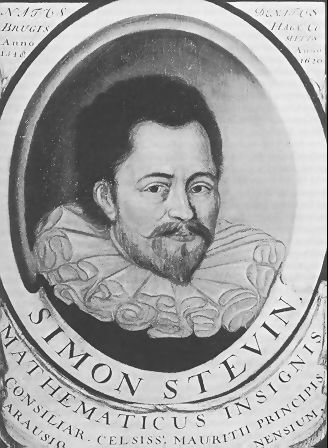
The Coss authors were all outside the university system and the algebra remained outside too. The process that led to the acceptance of algebra in the university system was a slightly different parallel one. To some extent it begins with Pacioli’s claim in his Summa that, unlike the quadratic equation, there was no general solution to the cubic equation. However, at the beginning of the sixteenth century Scipione del Ferro (1465–1526), the professor of mathematics at the University of Bologna found a general solution to one form of the cubic equation. He died without revealing his discovery, which was then inherited by one of his students, Antonio Maria Fior. It was common in this period for mathematicians to challenge each other to public problem-solving competitions and Fior challenged Niccolo Fontana (1500–1557), known as Tartaglia, a leading mathematical exponent, letting it be known that he had a solution to the cubic equation. Tartaglia realised he was on a hiding to nothing and set about studying the problem and came up with a more general solution. On the day of the competition Tartaglia won hands down and achieved overnight fame. Polymath Gerolamo Cardano (1501–1576) seduced Tartaglia into revealing his solution in exchanged for introductions into higher social circles. The condition was however that Cardano was not allowed to publish the solution before Tartaglia had done so. Cardano, however, travelled to Bologna and discovered del Ferro’s solution. In the meantime, Cardano’s student Ludovico Ferrari (1522-1565) had discovered the general solution to the bi-quadratic or quartic equation.

Having expanded del Ferro’s solution to a general one for cubic equations, Cardano combined it with Ferrari’s general solution of the quartic and published them both in his major algebra book Artis Magnae, Sive de Regulis Algebraicis Liber Unus (Book number one about The Great Art, or The Rules of Algebra), published by Johannes Petreius (c. 1497–1550) in Nürnberg in 1545.

He attributed the solution of the cubic to del Ferro much to the annoyance of Tartaglia, who still hadn’t published. Petreius had previously published Cardano’s abbacus book Practica arithmetice et mensurandi singularis in 1538.
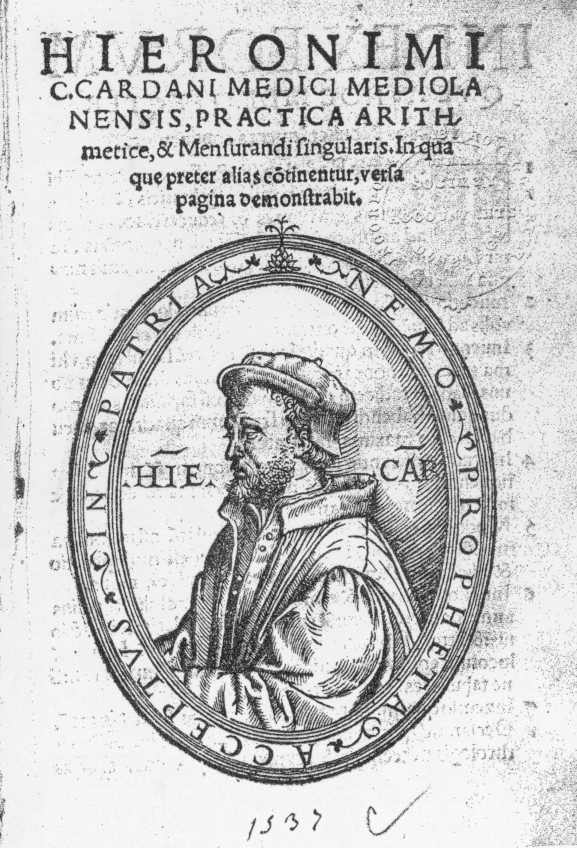
Cardano, a physician, astrologer, philosopher, and mathematician, was a leading intellectual figure in Europe and Petreius was the leading scientific publisher, so the Ars Magna had a major impact helping to establish algebra as an accepted mathematical discipline. Although it’s a claim that I view sceptically, this impact in reflected in the general claim that Ars Magna was the first modern mathematics book.
Cardano had not only accepted positive and negative solutions to all equations but had also to a limited extent worked with complex numbers in the solution of equations as long as they cancelled out. Another Italian mathematician Rafael Bombelli (1526–1572) fully developed the use of complex numbers in his L’Algebra from 1572, an algebra textbook.
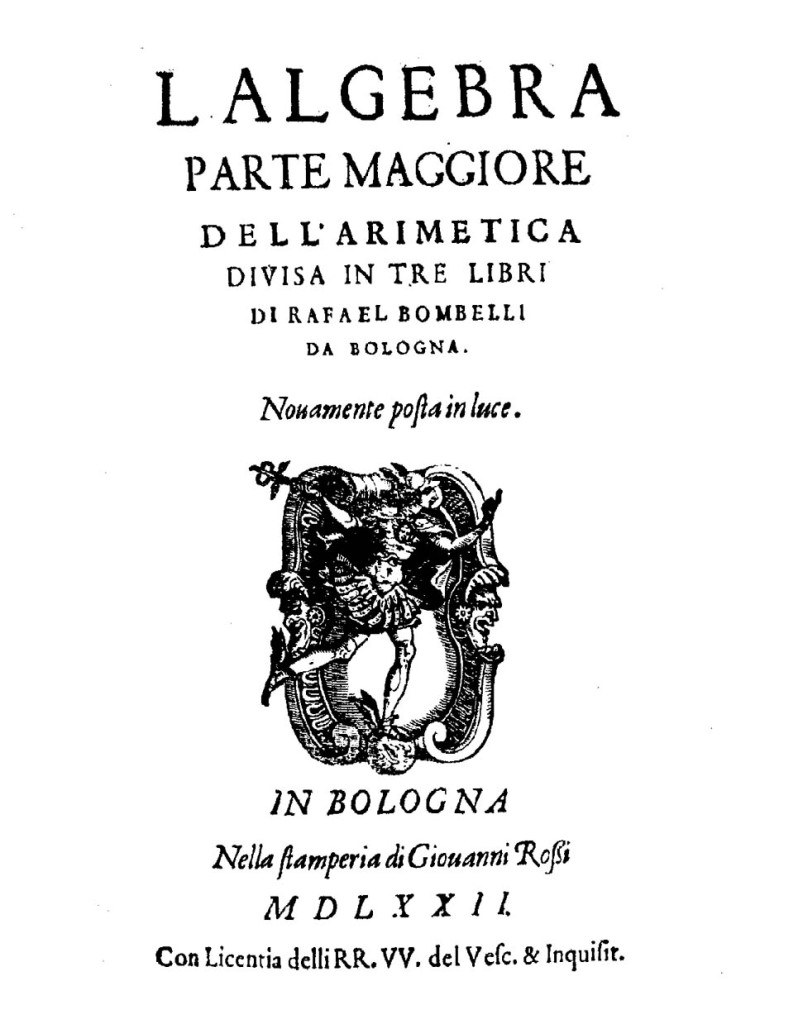
The last significant Renaissance algebra book published before the seventeenth century was probably the most significant, the In artem analyticem isagoge (1591) by the French mathematician François Viète (1540–1603). Viète pulled together, systemised, and provided a foundation for much of what had gone before. Most important he produced an algebra that was to a large extent symbolic in its presentation, which introduces a topic that I haven’t dealt with yet.


Historically there were three presentational forms of algebra. Rhetorical algebra in which everything is written out in full sentences with words and not symbols or numerals, for example X+1 = 2 becomes “the thing plus one equals two”. Babylonian and al-Khwārizmī’s algebra were both rhetorical algebras. The second form is syncopated algebra in which some of the words that repeated occur are reduced to abbreviations. This was the case with Brahmagupta’s Brāhmasphuṭasiddhānta. It was also the case with Diophantus’ Arithmetica (difficult to date but probably 3rd century CE). Diophantus’ Arithmetica is something that only became known again in Europe during the Renaissance. If Diophantus’ Arithmetica was originally syncopated is not known, as the oldest known manuscript dates from the 13th century CE. Viète drew heavily for his Isagoge from Diophantus. The third form is symbolic algebra in which both variables and operations are expressed with symbols. Some of the Arabic algebraists developed symbolic algebra but this was not transferred to Europe during the translation movement.
Most of the 16th century algebras are a mixture of rhetorical and syncopated algebra with occasional symbols for operations. The German university lecturer, Johannes Widmann (c. 1460–after 1498) introduced the symbols for plus and minus in his Mercantile Arithmetic oder Behende und hüpsche Rechenung auff allen Kauffmanschafft an abbacus book published in 1489.
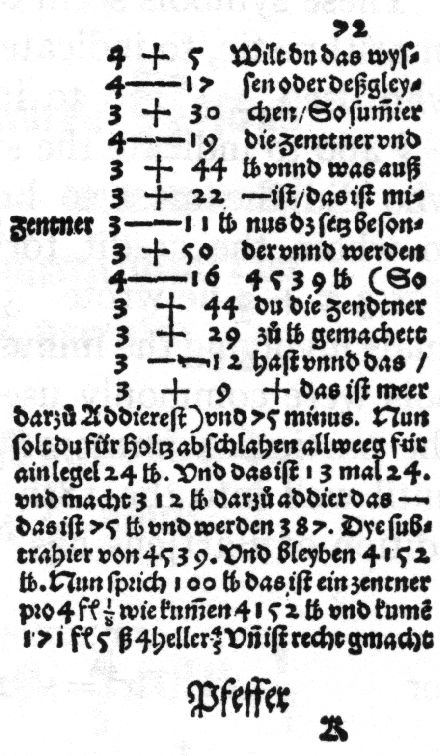
Famously, Robert Recorde introduced the equals sign in his Whetstone of witte, although he didn’t invent it, as it had already been in use earlier in Italy.

Viète systematically used symbols for variables and constants, using vowels for the former and consonants for the latter. He, however, did not use symbols for operations. Although his system did not last long it had a massive influence on the symbolisation of algebra.
The introduction of symbols for operations was a rather haphazard process that had begun in the fifteenth century and wasn’t really completed until the eighteenth century. A significant publication was William Oughtred’s Clavis Mathematicae (1631), which was almost entirely symbolic, although most of the symbols he invented did not survive in the long run.

The Clavis Mathematicae went through numerous Latin editions during the seventeenth century and was used widely as a textbook both in Britain and on the continent. Many leading seventeenth century mathematicians, including John Wallis, Christopher Wren, Seth Ward, Isaac Newton, and Edmond Halley, learnt their algebra from it. The first English edition was produced in 1647 and Halley produced a new English translation in 1694.
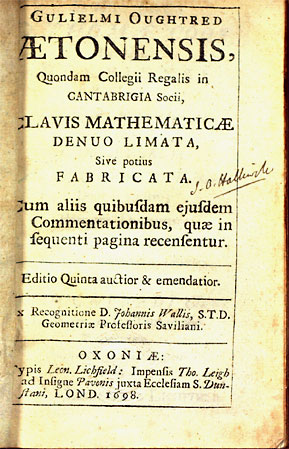
Ed John Wallis Source: Wikimedia Commons
Thomas Harriot (c. 1560–1621) and René Descartes (1596–1650) both made substantial contributions to the modern form of symbolic algebra.
In the seventeenth century both Pierre de Fermat (1601–1665) and Descartes combined algebra with geometry to create analytical geometry. Both of them, also contributed substantially to the conversion of calculus, which in its origins was geometrical, into an analytical algebraic discipline.
The acceptance and establishment of algebra in the first half of the 17th century was not uncontested and was certainly not a case of the modern scientists accepting and the last generation of traditionalists rejecting. Just to give one interesting example, Galileo, who is oft celebrated as the ‘father of modern science’, rejected it, whereas Christoph Clavius, the last of the great Ptolemaic astronomers not only accepted it but also wrote a textbook based on Viète’s algebra, which was then taught to and by all Jesuit mathematicians, and this although he was involved in a dispute with Viète about the calendar reform.
from Hacker News https://ift.tt/3otsMdf
No comments:
Post a Comment
Note: Only a member of this blog may post a comment.